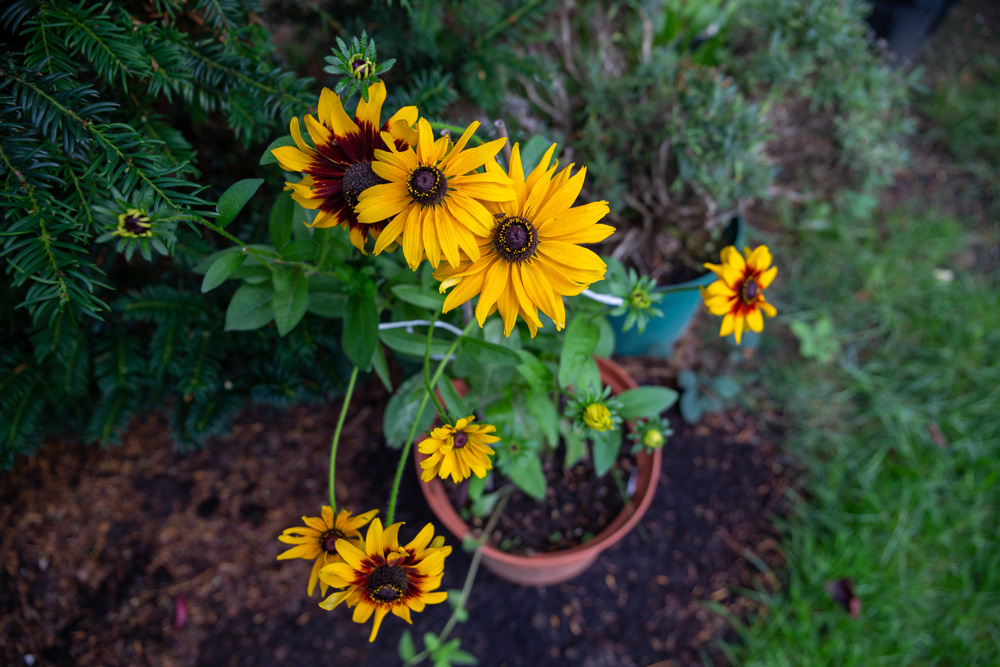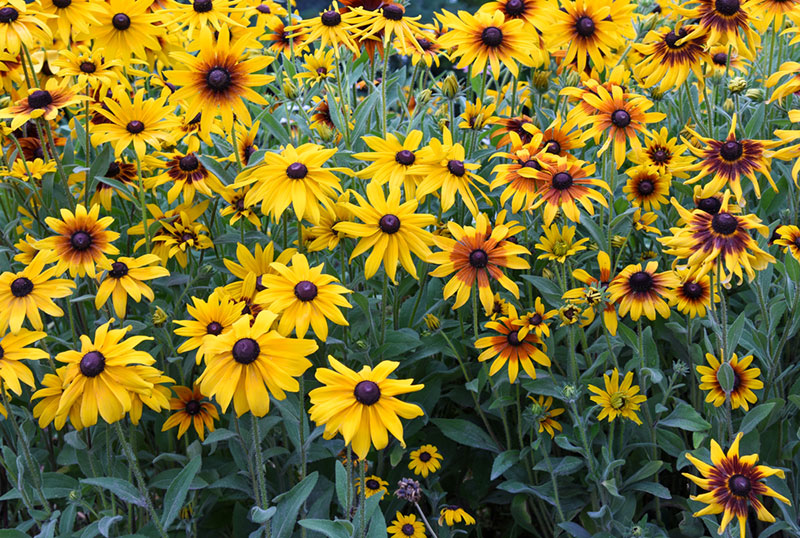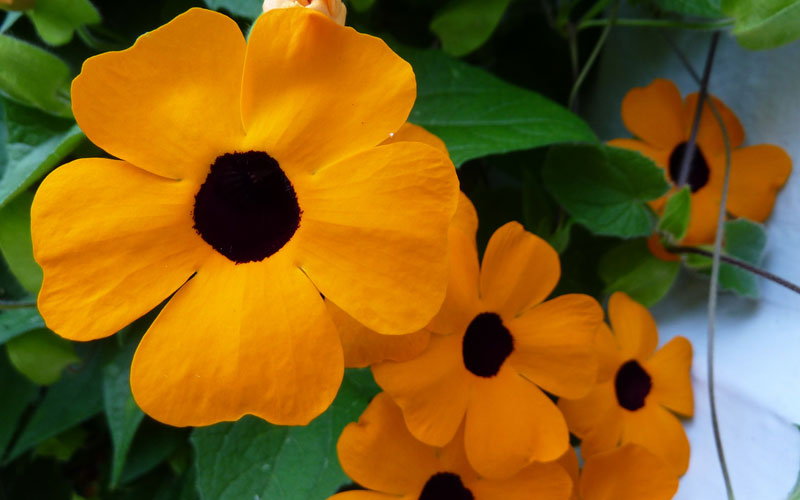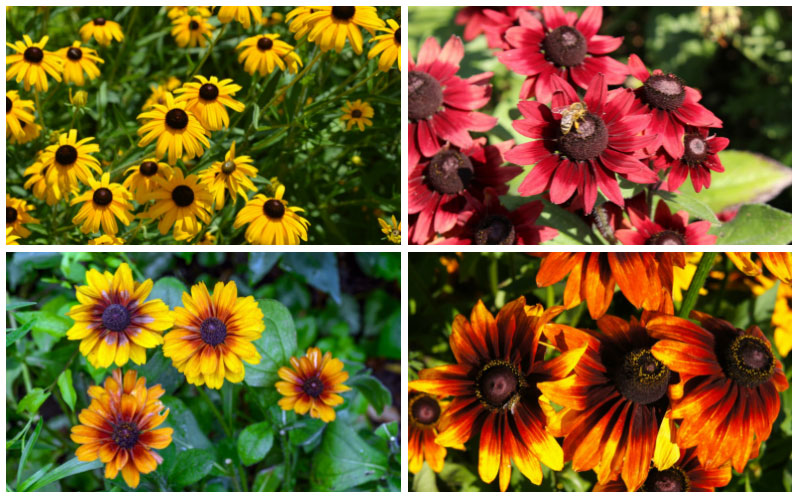Are you looking to add an extra aesthetic dimension to your garden by picking out some plants to accompany your black-eyed Susans? If you are, you may be asking yourself what the most suitable black-eyed Susan companion plants may be.
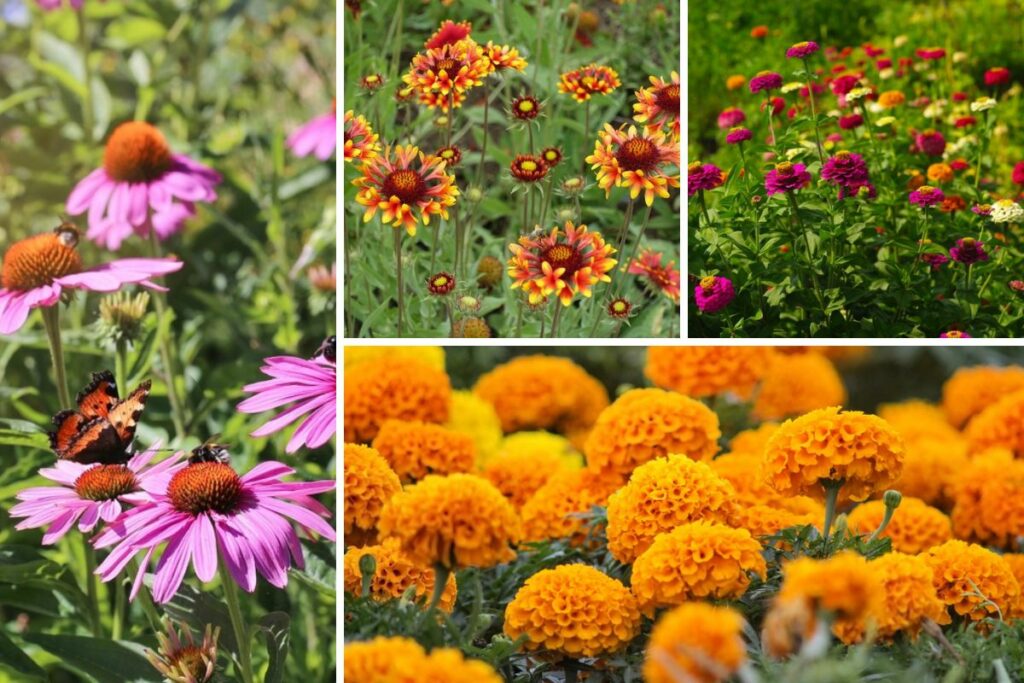
In short, the plants that best complement black-eyed Susans include lavender, angelonias, marigolds, and bee balm. These plants are ideal companion plants because of their aesthetic beauty and ability to keep pests away from your black-eyed Susans.
Read on to learn more about each of these plants. We also discuss why they pair up so well with black-eyed Susans and a few maintenance tips.
1. Lavender

The first item on our list is lavender. When in bloom, this plant produces stunning purple flowers that perfectly complement the bright yellow petals of black-eyed Susans.
In addition to its aesthetic appeal, lavender has functional benefits as well. Its aroma deters harmful pests such as fleas, flies, and mosquitoes that like to gather around black-eyed Susans. At the same time, it attracts beneficial insects such as bees.
Another perk of growing lavender alongside black-eyed Susans is that they thrive in direct sunlight and well-drained soil, making them the perfect companions.
2. Angelonias
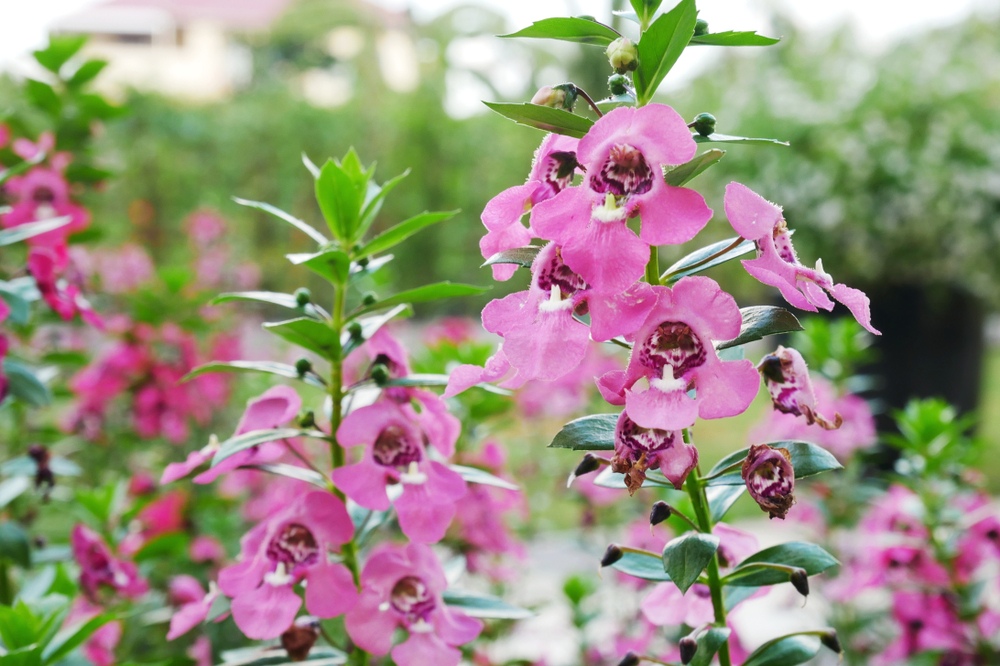
If you’re looking to add a splash of color to your garden, angelonias are another excellent choice to grow with your black-eyed Susans. These plants come in an assortment of colors, including blue, white, pink, and purple.
Angelonias thrive in hot conditions with moist yet well-drained soil. These plants also need consistent direct sunlight to thrive. They work best as border plants for your black-eyed Susans to further beautify your garden.
Additionally, these plants are notorious for their ability to repel mosquitoes. They developed this trait to help them survive in the South American tropics, and it’s one feature that can help protect your black-eyed Susans.
3. Marigolds
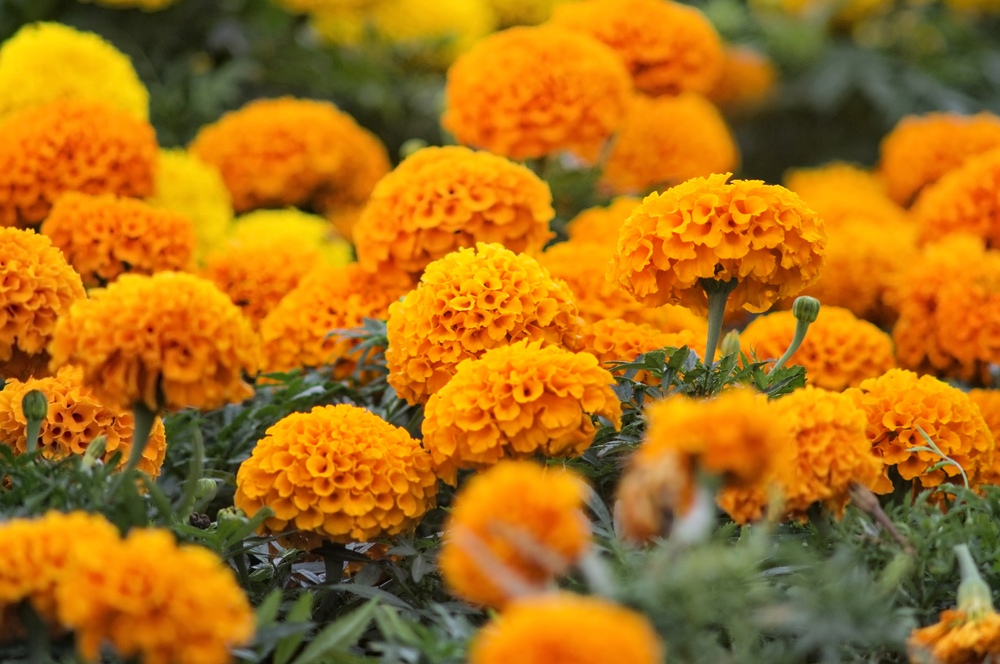
Marigolds are commonly grown as companion plants and not just with black-eyed Susans.
This is because they have many of the attributes you’d want in a companion plant. On a functional level, marigolds are excellent pest repellents.
On the flip side, they act as magnets for pollinating insects, such as bees and butterflies. These pollinators can really help boost your harvest if you intend to grow black-eyed Susan tomatoes.
These fiery orange and yellow flowering plants bloom early in the summer and thrive in well-drained soil.
4. Sage

When searching for a black-eyed Susan companion plant, you’ll be hard-pressed to find one better suited than sage.
For starters, sage thrives in direct sunlight, just like black-eyed Susans. The two plants also have similar watering needs.
Like lavender, the stunning violet spires produced by this plant will provide a striking contrast against the vibrant yellow hue of the black-eyed Susans. Together, they can make your garden a sight to behold, especially when the sage blooms come summertime.
Additionally, this plant’s fragrant is a joy for the senses. However, it has the opposite effect on pests such as snails and beetles. Therefore, it can help prevent them from wreaking havoc on the more vulnerable black-eyed Susans.
5. Bee Balm

If you’re looking for a low-maintenance option to grow with your black-eyed Susans, look no further than bee balm.
This perennial flowering plant thrives year-round with its bright pink or white leaves. Besides adding an extra dimension of color to your garden, it also serves as an extra layer of protection against pests, thanks to its herbal minty smell.
Additionally, the high nectar content of these plants brings in a lot of bees, hence the name.
The hardy bee balm can grow in virtually any condition. However, it grows best in direct sunlight and moist, slightly acidic soil.
6. Coneflowers
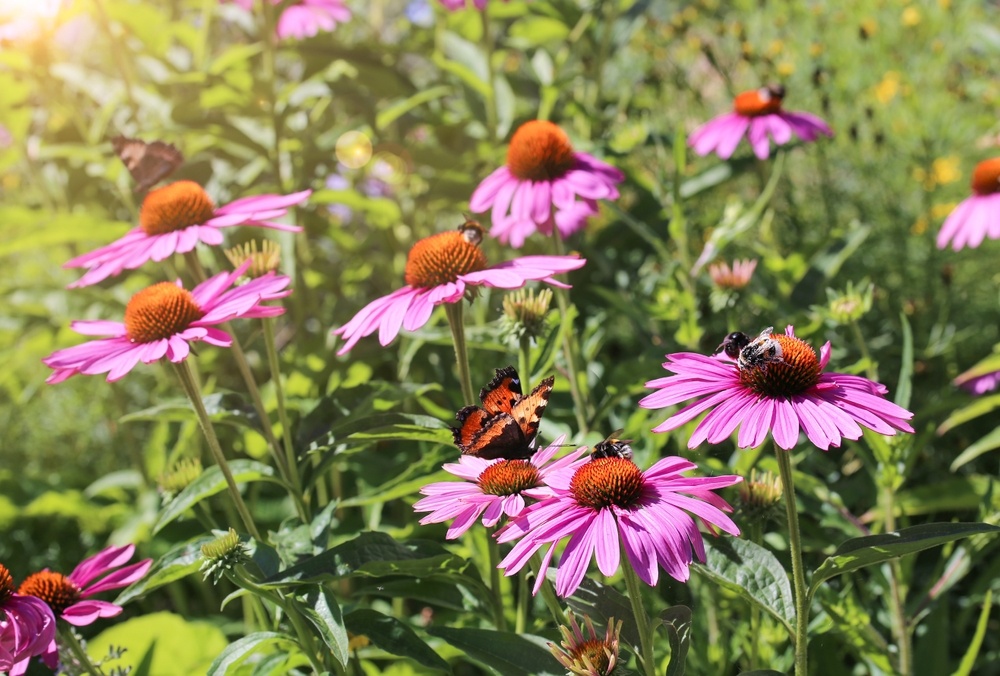
If none of the plants mentioned above tickle your fancy, then this one might do the trick.
The unique shape of coneflowers makes them great companions for black-eyed Susans. Their spiky central cones are great eye candy next to the domed configuration of the latter.
Additionally, their beautiful light-purple petals make the bright yellow flowers of the black-eyed Susans seem that much brighter.
Coneflowers need plenty of direct sunlight and should be watered regularly. However, before watering, make sure the soil has thoroughly dried to avoid root rot.
7. Common Yarrow
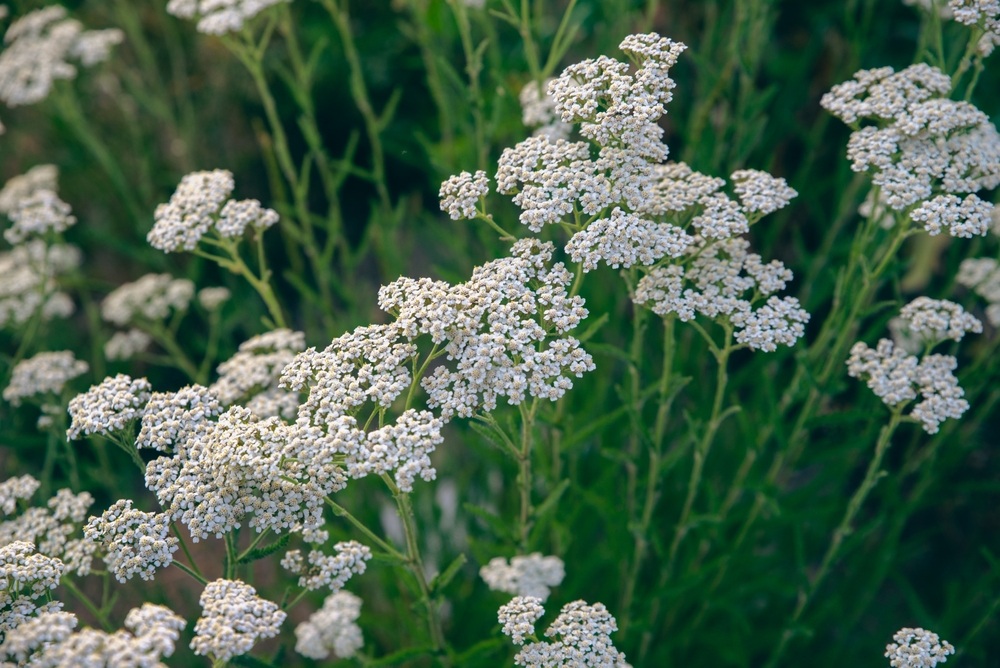
Since both plants grow well in similar conditions, common yarrows are an ideal match for black-eyed Susans right off the bat. Common yarrows thrive in direct sunlight and well-drained soil.
Furthermore, common yarrows are excellent at attracting pollinators like bees and butterflies. As such, this makes them highly beneficial companions to black-eyed Susans.
Additionally, the yarrow’s white, red, and purple blooms do a terrific job of setting off the colors of the black-eyed Susan.
8. Blanket Flowers
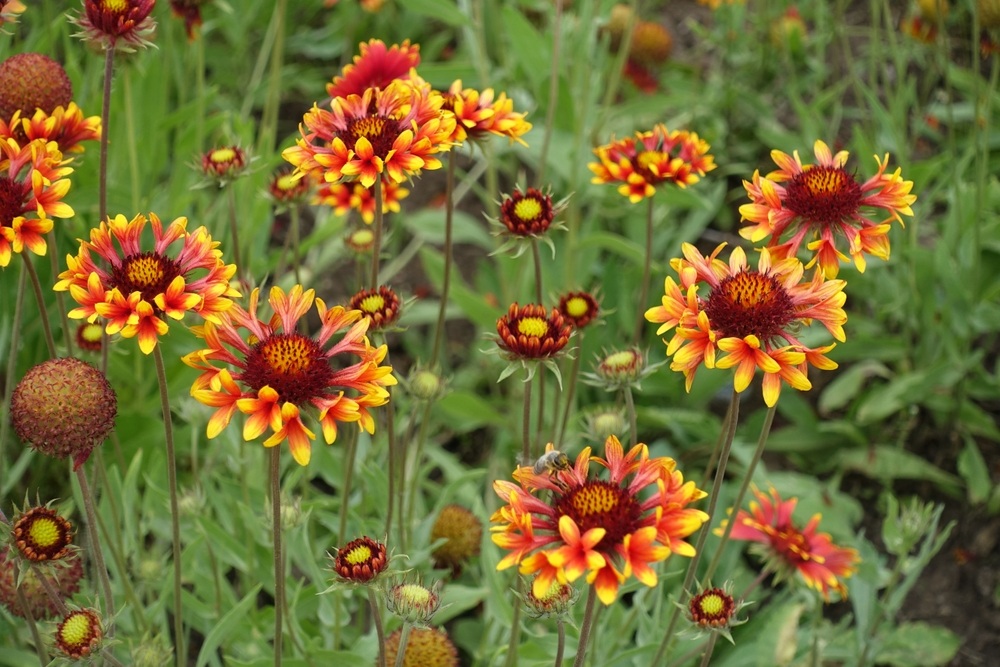
Blanket flowers, with their yellow-tipped, bright crimson flowers, are truly breathtaking in and of themselves. So, just imagine how aesthetically pleasing they would look when planted side-by-side with your black-eyed Susans!
These plants can easily handle growing in dry soil. Although, it’s best to plant them in well-drained soil as this coincides with the optimal growing conditions for black-eyed Susans.
Since blanket flowers don’t grow very tall, we recommend planting them in front of the larger black-eyed Susans so they can show off their beauty and glory.
9. Zinnias
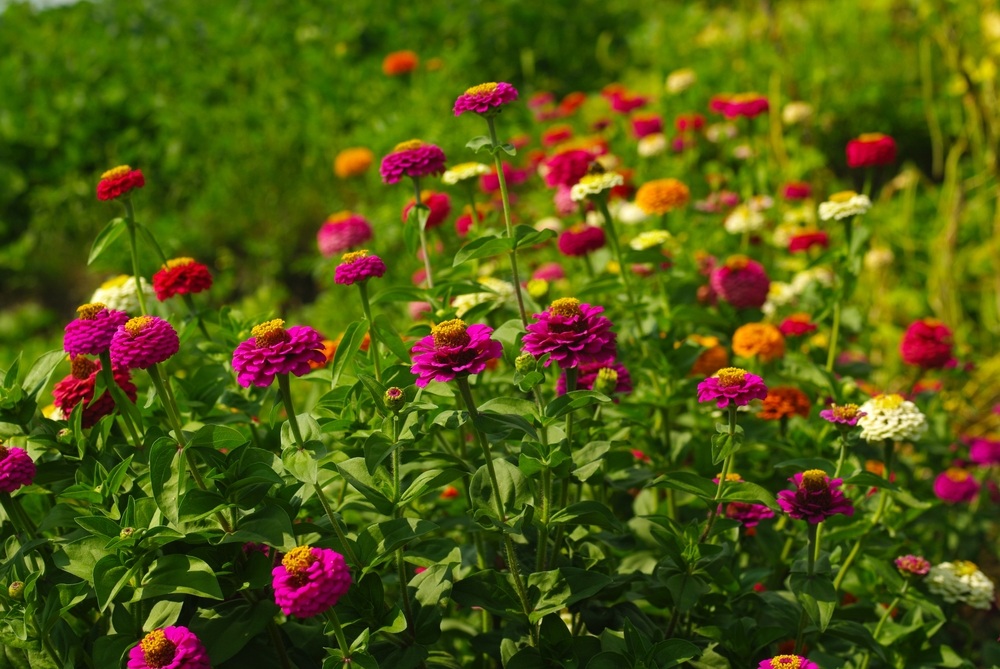
Whatever type of visual appeal you have in mind for your garden, there’s sure to be a variety of zinnias that suits your needs.
These plants come in a variety of bright colors, including yellow, red, purple, and pink.
As with most of the plants on this list, zinnias flourish in areas with abundant direct sunlight and well-drained soil. Then, when summer rolls around and your zinnias start to bloom, your backyard will turn into a field of vibrant, lively colors.
Furthermore, having zinnias on hand can prove highly useful, thanks to the plant’s antifungal and antioxidant properties.
10. Hosta

Last, but not least, hostas are an excellent option as black-eyed Susan companion plants.
Hostas have dense, voluminous foliage and lovely scent.
Plus, these lively plants grow best in filtered sunlight and moist soil, similar to the black-eyed Susans.
On a final note, you should keep in mind that the large surface area of their leaves can be attractive to pests, such as beetles.





